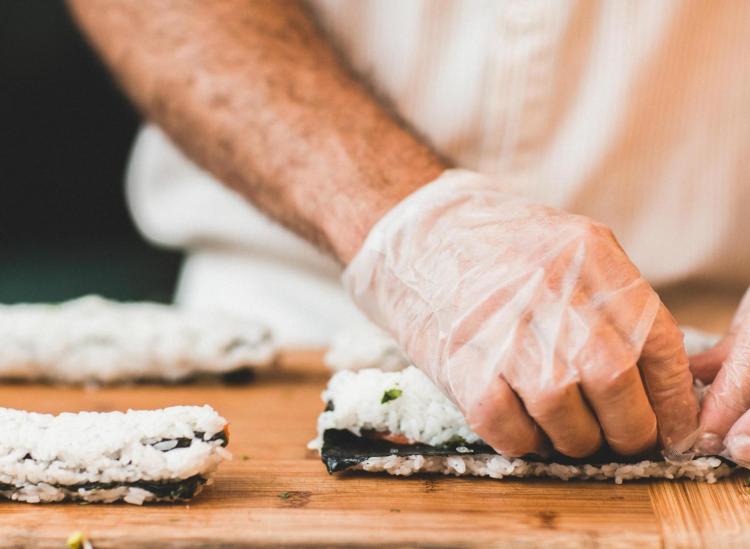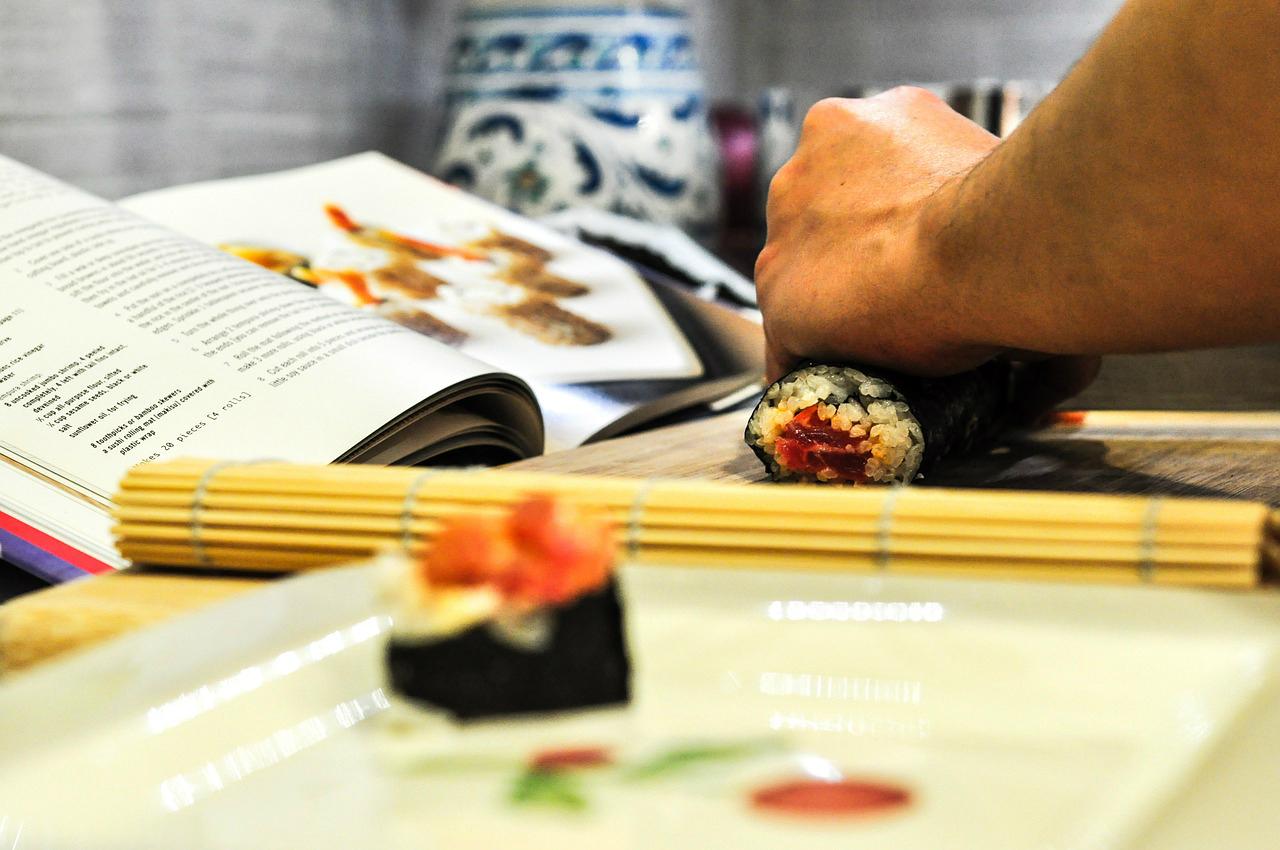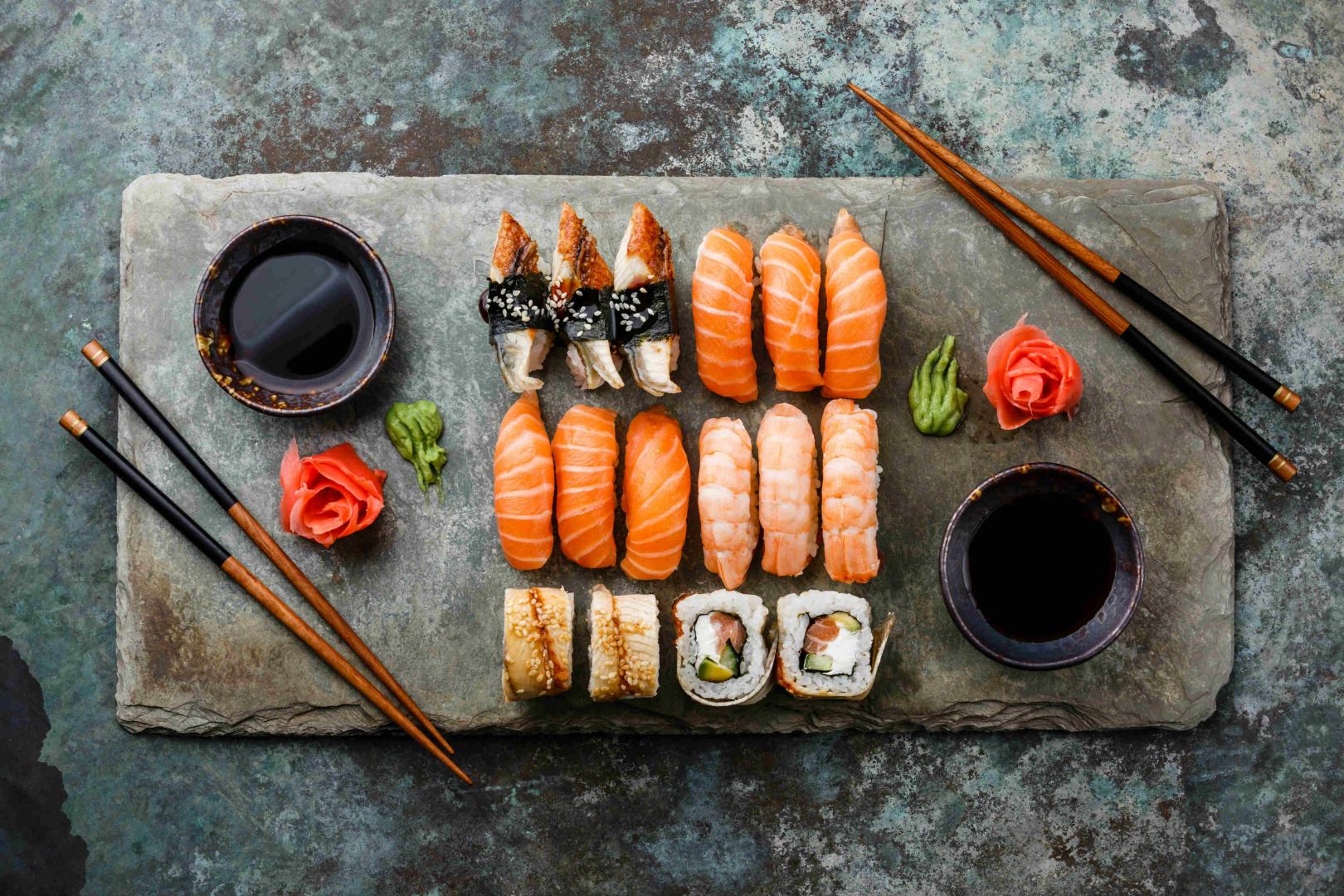Here’s How To Make Sushi At Home

Unsplash
You might think the most important part of sushi making is the fish, right? The fish is definitely a key component, but an even more crucial step is seasoning your rice properly. On the one hand, it’s easy to think making sushi is simple, with only a few ingredients, but then you have to think that there are sushi chefs who have spent most of their lives performing the Japanese art form. It’s important to know the different between sushi (fish combined with vinegared sushi rice) and sashimi (just the fish by itself). Here are the basic types of rolls you should know; Maki rolls are thin with the seaweed on the outside; Temaki, or hand rolls, are cone-shaped rolls that you eat like an ice cream cone; and Uramaki, which are the more Americanized rolls with rice on the outside. There’s no harm is giving it a go in your own kitchen! Here’s the general gist of sushi making.

Pixabay
Rice
A recipe in Food & Wine takes sushi tips from the master himself, Masaharu Morimoto. The Iron Chef star stresses the importance of seasoning your short-grain Japanese rice to taste. If possible, use a rice cooker after rinsing the rice a few times. In a saucepan, combine the sake-mash vinegar (or white wine vinegar), rice vinegar, sugar, and salt, over medium heat to dissolve the sugar. In a large wooden bowl, drizzle the vinegar mixture over the rice. With a wooden spoon or a spatula, make a slicing motion to separate the rice grains in order to keep them light and fluffy. According to chef Morimoto, you should also fan the rice white mixing it to help it dry. Cover the rice with a damp towel to keep it warm until it’s time for sushi assembly.

Shutterstock
Nori
Nori is the paper thin, edible, toasted seaweed that’s used to make most kinds of sushi. It’s important to keep the nori dry until it’s time to assemble your rolls. Along with the fact that seaweed offers a bunch of nutritional benefits, it’s also the main glue that keeps your sushi from falling apart.
Fish
While almost all fish and sea creatures are edible, there are certain types that are more common for sushi making. The main varieties usually include tuna, salmon, eel, scallops, yellowtail, halibut, squid, mackerel, and then bass-like fishes such as seabass, porgies, and snapper. It’s been said that even though using fresh fish is always better, using previously frozen fish is a safer way to avoid any chance of parasites. Countries like the United States, Norway, Britain, New Zealand, Canada, and Japan, have strict standards about cleanliness and you most likely won’t find parasites in their farmed fish.
Assembly
Let’s start with making a classic maki roll with an easy to handle fish like salmon or tuna. You’ll want to julienne your vegetables first. Get yourself a bamboo sushi mat from any kitchen appliance store. Roll out the mat and then place your sheet of nori on top. It’s helpful to dip your hands in a bowl of water with a splash of vinegar so the rice doesn’t stick to you. Grab a ball of rice, about the size of your fist, and spread it out evenly across the nori. Using a sharp chef’s knife, slice your fish of choice on a 45-degree angle (about four fingers in width) and place the fish in the middle of the rice. Place your veggies and other ingredients on top of the fish.
Starting from the bottom of the mat, roll it up once (while pressing the ingredients in with the tips of your fingers), and then roll once more to secure everything in place. Dip your knife into the bowl of water/vinegar and then slice the roll into six pieces. If you’ve made it this far, congrats, but don’t be embarrassed if it didn’t go smoothly because this technique takes a ton of practice. Check out the video above for a more visual explanation.











